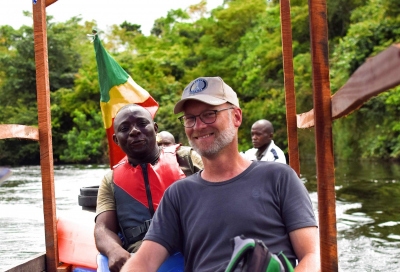- Startseite
- MARUM Research Seminar 2022
- Enno Schefuß
Land-ocean connectivity of the Congo Basin – or how to get samples from central Africa
The Congo River basin is second only to the Amazon regarding catchment size, runoff and carbon export into the ocean. In contrast to other rivers systems, however, the Congo River basin is much less well studied due to its logistical inaccessibility. Located in some of the least developed countries on Earth the central African Congo Basin contains a unique tropical rainforest ecosystem of global importance which is recognized for future environmental protection while also allowing regional economic development interests.

Much work has so far been done using indirect approaches, such as via remote sensing and/or marine sediment cores, while scientific exploration in the region itself has been delayed despite of occasional individual efforts. In that context it is not surprising that the central Congo Basin has only recently been identified to contain the largest tropical peatland on Earth, storing an impressive ca. 30 Pg carbon, again underlining its significance for environmental protection. Based on earlier work on Congo Basin hydrology and carbon fluxes into marine sediments using offshore archives, I will present new findings from peat profiles recovered from the basin documenting the sensitivity of the peat carbon reservoir to climatic changes and the land-ocean connectivity of carbon fluxes. Next to scientific aspects, I will also present how sampling expeditions in such challenging environments can be conducted and report personal experiences.


